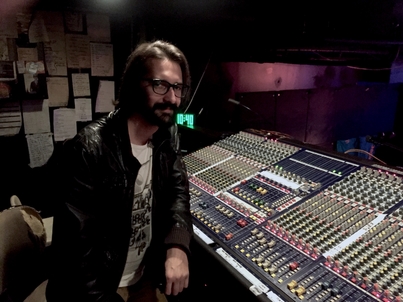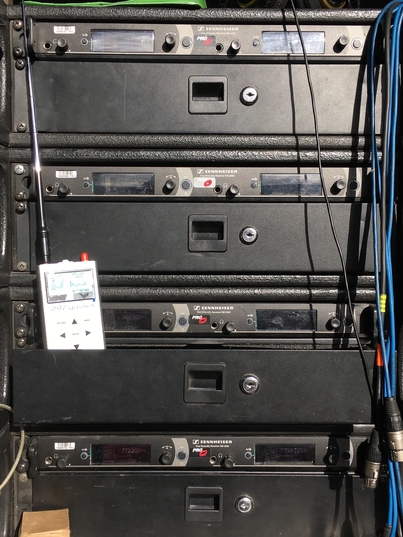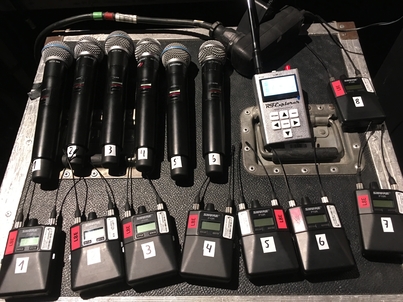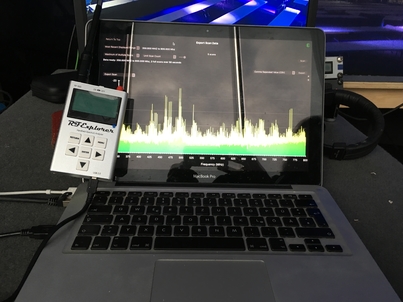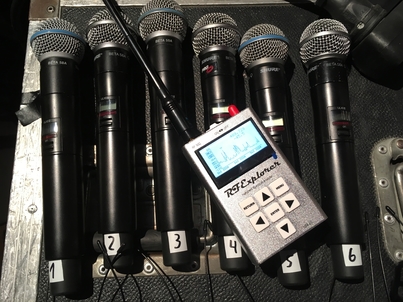Wireless 2018, the RF-EXPLORER/3 in action
I first applied the RF-EXPLORER/3 from MONACOR to analyse and monitor the UHF frequency range at an event of the “Deutsche Sporthilfe” (German sports foundation) called “Ball des Sports” in Wiesbaden, Germany. More than 30 channels for wireless devices, both microphone links and in-ear monitoring, had to be taken care of at the production as well as additional frequencies calculated which have been used by TV and intercom. The RF-EXPLORER/3 was used on a MacBook Pro with the software “Vantage” by RF Venue for Mac OS X. The corporate software from MONACOR is exclusively available for Windows computers.
With the applied software, it is possible to scan the required frequency ranges on a laptop which features a large and easy-to read display. The connection with the software is established via USB and the Explorer is recognised without any problems or further installations. The collected data can be exported in .cvs format which is another advantage of the RF-EXPLORER/3 and the Vantage software. The data can directly be imported into WirelessWorkbench 6 by Shure, which is used to calculate frequencies. Therefore, the workflow is quick and straightforward.
The RF-EXPLORER/3 can analyse the frequency range from 15 to 2,700 MHz and the 2.4 GHz band. This range is absolutely sufficient for the intended use and helps to solve existing issues with frequency calculation. Due to decreasing frequency ranges which can be used for professional wireless applications, regionally varying digital TV stations and LED panels which may be installed at events and interfere with the frequency range to be used, UHF applications become mora and more complex. The increasing number of wireless microphones, in-ear lines and other wireless devices like Telex intercom systems, still add to the situation. Therefore, new software and hardware tools like the RF-EXPLORER/3 are required for a smooth and interference-free operation.
The comprehensive functions of the RF-EXPLORER/3 which can be operated with different modes (normal, max, average and overwrite), the automatic marker function and the manual positioning of the marker for setting individual carrier frequencies are useful and impressive features to ensure a problem-free operation. Focussing on frequency ranges and level ranges or displaying the maximum frequency range to be used respectively by the existing devices greatly facilitate locating and monitoring other operational transmitters in the respective work environment. Thanks to the high-performance batteries, it is possible to simply walk around in search of troublemakers.
As with other data-collecting applications (e.g. levelling of PA systems), experience in interpreting the diagrams is essential because the RF-EXPLORER/3 shows different results to frequency scans of different devices like microphone receivers or in-ear receivers at the same location.
In my opinion, a continuous use of the RF-EXPLORER/3 will benefit your routine and enhance workflow efficiency when handling UHF devices. Thus, complex situations can be solved and managed. As far as I am concerned, I will continue to use the RF-EXPLORER/3 by MONACOR. I look forward to using the RF-EXPLORER/3 in the future and I am reassured to have it in my tool case.
